
- Appointments
- Awards
- Books & Authors
- Committees
- Deaths
- Defence
- Economic
- Environment
- Finance
- Important Days
- International
- Miscellaneous
- National
- Persons in NEWS
- Places in NEWS
- Regional
- Reports
- Resignations & Retirements
- Science & Technology
- Sports
- October 2016 - Exams Resources
- Current Affairs - Quiz
- Current Affairs - Test
- Current Affairs - PDF
Current Affairs October 2016 - Environment
News 1 - New species of Pika discovered in the Sikkim Himalayas

Researchers at the National Centre for Biological Sciences (NCBS), Bengaluru have identified a new species of Pika in the Sikkim Himalayas. The new species has been named Ochotona Sikimaria.
Pikas are members of the rabbit family and live either high up in the mountains or in cold (temperate) places as they are highly cold adapted. They look like tailless rats. Of the 28 species of Pika reported worldwide, 26 are found in Asia and five in the eastern Himalayan region alone.
News 2 - Tamil Nadu tops list of endemic flowering plants

Botanical Survey of India (BSI) announced that Tamil Nadu tops the list of endemic flowering plants. Almost one of every four species of flowering plants found in India is endemic to the country. Of these, Tamil Nadu garners the highest number of species with 410. Tamil Nadu is followed by Kerala with 357 and Maharashtra with 278.
Of the total 18,259 flowering plants reported in the country, 4,303 (over 23%) are found only in India or they are endemic to the country.
News 3 - Litoria Bella frog species discovered in Australia
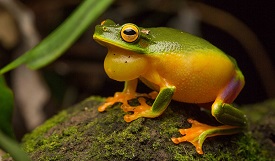
A new frog species discovered in Queenslands Cape York appears like the Graceful tree frog (Litoria Gracilenta), and thus it is termed as Litoria Bella. The scientific name of this new species, Bella, means beautiful as it looks beautiful with its green head and back, orange belly, bright orange hands and feet, iridescent bluish purple inner thigh.
The call of the [male Cape York graceful tree frog] is longer and lower with fewer pulses and slower pulse rate.
News 4 - ASI protected historical monuments and archaeological sites declared Polythene free zones

All ASI Protected Historical Monuments and Archaeological Sites have been declared Polythene Free Zones. Advisory has been issued to all State Governments/UTs to support ASI in keeping Monuments Polythene Free up to 300 meters from the protected boundaries of the Monuments.
Ministry of Culture has sanctioned Rs.350 crores to provide facilities like Protected Boundaries, Toilets and Disabled Friendly Access in all ASI Protected Monuments. ASI has ranked top 25 Adarsh Monuments based on the Cleanliness parameters.
News 5 - New termite species named Chiraharitae discovered
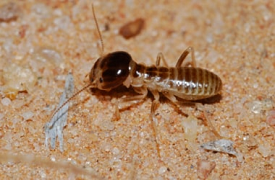
A new termite species, Glyptotermes Chiraharitae, has been discovered at Kakkayam in the Malabar Wildlife Sanctuary by Amina Poovoli and K. Rajmohana, Senior Scientists, Zoological Survey of India.
The species are named Chiraharitae, after the tropical evergreen forests of the Western Ghats, where the termite was spotted. The flying adults of this species are approximately 10 mm long, while the soldiers are around 9.5 mm long. They are exclusively wood dwelling and do not require any contact with soil.
News 6 - India to eliminate potent greenhouse gas HFC-23 by 2030

India, at a meeting of parties to the Montreal Protocol at Kigali in Rwanda, has announced to eliminate the use of HFC-23, a greenhouse gas that harms the ozone layer, by 2030. HFC-23, a potent greenhouse gas with global warming potential of 14,800 times more than that of CO2. It is used in industrial refrigeration. HCFC stands for hydrochloroflurocarbon.
The Montreal Protocol, which came into force in 1989, is aimed at reducing the production and consumption of ozone depleting substances to protect the earths fragile ozone layer.
News 7 - Kashmiri Red Stag to be declared 'Critically Endangered' by IUCN
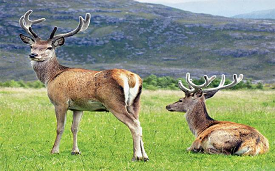
The IUCN (International Union for Conservation of Nature) is all set to declare the Kashmiri Red Stag or Hangul as a 'critically endangered' species. It is known for its giant antlers bearing 11 to 16 points.
Its population was found just over 200 in the last census done in 2011. Currently, its population is largely confined to the Greater Dachigam Landscape (1,000 sq.km.), encompassing the Dachigam National Park (NP).
News 8 - Brazil opens Latin America's first Elephant Sanctuary

Brazil has opened the first elephant sanctuary in Latin America to provide a home for an estimated 50 circus animals from across the region. The first resident elephants of the sanctuary are Guida and Maia.
Elephant Sanctuary Brazil was founded by the US-based non-profit organization Global Sanctuary for Elephants. The area has 2,800 acres and bought for $1m (820,000) to be paid over five years. It can house as many as 50 elephants.
News 9 - Smooth-coated Otter sighted for the first time in Krishna Wildlife Sanctuary
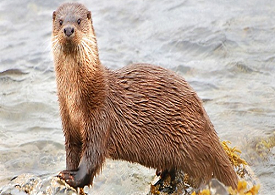
Smooth-coated otter (Lutrogaleperspicillata) was sighted for the first time in the mangrove forest adjacent to the Krishna Wildlife Sanctuary in Krishna district. In all, seven otters were sighted in the mangrove forests and brackish water channels.
The smooth-coated Otter (Lutrogaleperspicillata) is a carnivorous mammal. The fur of this species is smoother and is distributed throughout South Asia and South East Asia. It has been categorised vulnerable in the red data book of International Union for Conservation of Nature (IUCN).
News 10 - Globally Averaged CO2 Levels Reach 400 PPM in 2015

According to the World Meteorological Organization's annual Greenhouse Gas Bulletin, globally averaged concentration of carbon dioxide in the atmosphere reached 400 parts per million for the first time in 2015. It has surged again to new records in 2016 on the back of the very powerful El Nio event.
The Carbon dioxide (CO2) accounted for about 65% of radiative forcing by long-lived greenhouse gases. The Greenhouse Gas Bulletin provides a scientific base for decision making.
News 11 - New species of Millipede discovered in Sequoia National Park, California
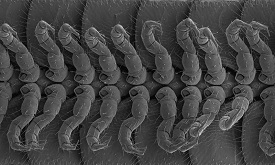
Scientists have discovered a new species of millipede at Sequoia National Park in California. It has 414 legs, four 'penises', bizarre-looking mouthparts and secretes a poisonous chemical as a defence mechanism.
It is the evolutionary cousin of the leggiest animal on the planet, Illacmeplenipes. The new millipede is named Illacmetobini. The study was published in the open access journal ZooKeys.I. tobini was found by cave biologist Jean Krejca.
News 12 - Ross Sea declared world's largest Marine Protected Area of Antarctica

After many years of negotiations, delegates from 24 countries and the European Union meeting in Hobart, Australia declared The Ross Sea of Antarctica as worlds largest Marine Protected Area (MPA). The proposal was introduced by New Zealand and the United States. It is accepted by all the other nations, will see a general protection notake zone where nothing can be removed including marine life, oil, gas and minerals.
The Ross Sea is home to penguins and world's largest marine protected area covering 1.6 million square kilometers.